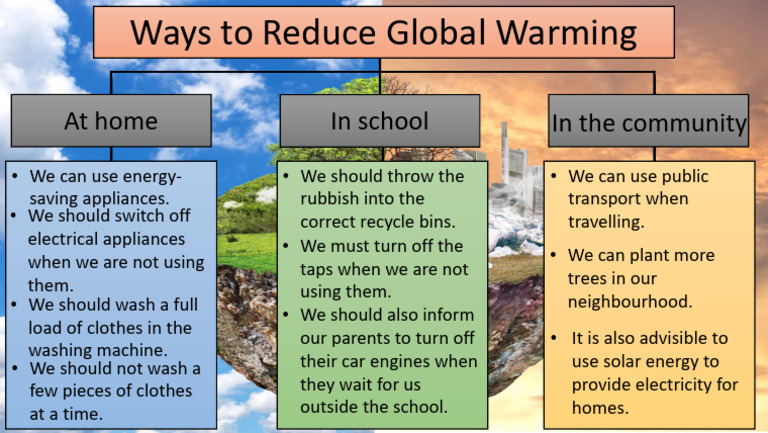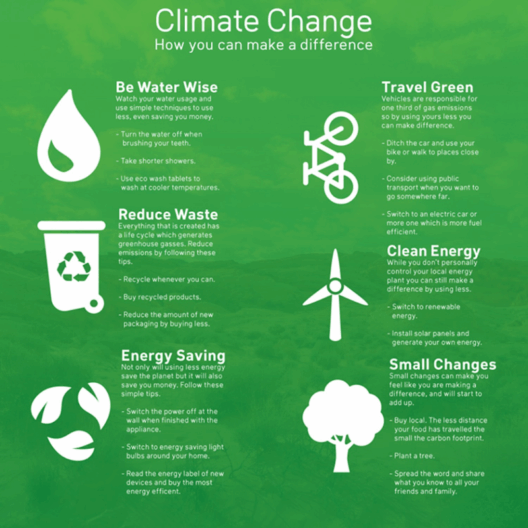Global warming has become an urgent issue in contemporary society. As the planet’s temperature steadily rises due to anthropogenic emissions of greenhouse gases, the consequences of climate change are increasingly evident. However, there is a plethora of actionable steps individuals, communities, and governments can undertake to mitigate this crisis. This article will explore various strategies to decrease global warming, ultimately aiming to inspire collective action toward a sustainable future.
Embracing Sustainable Living: A Personal Commitment
Adopting a sustainable lifestyle is one of the most significant contributions to reducing global warming at the individual level. Sustainability involves making conscious choices that minimize environmental impact and prioritize resource conservation.
One of the most impactful changes is to reduce energy consumption. Simple actions, such as switching off lights when not in use, unplugging electronic devices, and utilizing energy-efficient appliances, can result in considerable energy savings. Additionally, consider transitioning to renewable energy sources, such as solar or wind power. Many utility companies offer options to purchase green energy, making it easier to decrease reliance on fossil fuels.
Moreover, reducing waste is paramount. Embracing practices like recycling, composting organic matter, and choosing products with minimal packaging can immensely decrease landfill contributions. A shift toward a minimalist approach, wherein one carefully considers purchases and focuses on quality over quantity, can further lessen one’s ecological footprint.
Rethinking Transportation: Lessening Carbon Footprint
Transportation is a significant contributor to greenhouse gas emissions. A concerted effort to rethink our mobility can play a crucial role in combatting climate change. First and foremost, consider using public transportation. Buses and trains are generally more energy-efficient per passenger than individual cars.
Furthermore, walking or cycling not only reduces emissions but also promotes a healthier lifestyle. For longer distances, carpooling can be a viable alternative, ensuring fewer vehicles on the road. In urban areas, exploring electric bikes or scooters can also present an eco-friendly solution.
For those who must drive, it is essential to maintain vehicles appropriately. Regular tune-ups can enhance fuel efficiency. When purchasing a new vehicle, consider environment-friendly options, such as hybrid or electric models. These vehicles emit fewer pollutants and offer an effective means of reducing dependence on fossil fuels.
Farm-to-Table Initiatives: Supporting Sustainable Agriculture
A key factor in global warming is the agricultural sector. The methods employed in food production often contribute to greenhouse gas emissions. Shifting toward sustainable agricultural practices can bolster food security while simultaneously assuaging climate impacts. Consumers can play a significant role by opting for local and organic products.
Choosing locally sourced foods reduces the carbon footprint associated with transportation. Furthermore, supporting farmers who practice sustainable agriculture promotes biodiversity and minimizes the use of harmful chemicals. Consider growing your own herbs and vegetables, which not only rewards individuals with fresh produce but also cuts down on emissions related to food transport.
Understanding the importance of limiting meat consumption is also vital; the livestock industry is a significant emitter of methane gas, a potent greenhouse gas. Adopting a plant-based diet, even partially, can dramatically decrease one’s carbon footprint. Engaging in Meatless Mondays or exploring new vegetarian recipes can be both enjoyable and rewarding.
Advocacy and Community Engagement: Mobilizing for Change
A singular commitment to reducing global warming can echo within the larger community, fostering collective action and systemic change. Engaging in advocacy efforts can amplify the message of environmental responsibility. Joining local environmental organizations or participating in community clean-up events can catalyze positive environmental change.
Moreover, encourage civic leaders to prioritize sustainable policies. This may include supporting legislation that promotes renewable energy investments, enhances public transportation infrastructure, or imposes regulations on industrial emissions. Comprehensive policies addressing climate change require public support, and voicing concerns to elected officials can lead to significant advances in environmental protection.
Additionally, participating in educational outreach can empower others to make informed decisions. Organize workshops or discussions focusing on sustainability and climate action within schools, workplaces, or community centers. By fostering a culture of environmental awareness, societal norms can shift toward more sustainable practices.
Conclusion: A Call to Action
Addressing global warming is an intricate challenge; however, it is imperative that individuals and communities take concrete steps toward reducing their impact on the environment. By embracing sustainable living, rethinking transportation, supporting sustainable agriculture, and engaging in advocacy, we can create a more resilient and sustainable planet for future generations. Every small action contributes to a larger movement, demonstrating that through collective efforts, significant change is indeed possible. As stewards of this planet, we must unite to combat climate change and pave the way toward a thriving ecosystem.







